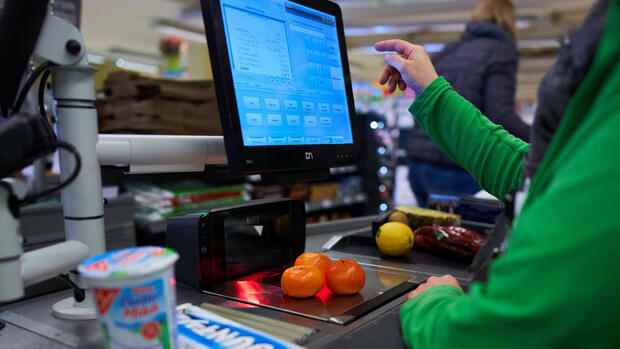During the pandemic, consumers were able to save a lot of money, now they have to draw on the savings.
(Photo: imago images/Action Pictures)
Dusseldorf Germany’s consumers are concerned about autumn and the forthcoming winter. The HDE consumption barometer for October has slipped to a new all-time low, and the index has been falling almost steadily since summer 2021.
The HDE Barometer is calculated monthly by the Handelsblatt Research Institute for the HDE trade association. It consists of various sub-indicators and is based on a representative survey of around 1,600 households.
According to the survey, consumers’ economic and income expectations for the coming months continued to fall, and inflation expectations are now higher than ever. Only on Thursday did the Federal Statistical Office calculate an inflation rate of 10.0 percent for September – and the trend is still rising. After all, from a scientific point of view, inflation always occurs when people start talking about inflation.
Consumer pessimism is in line with forecasts by economists. Last week, the DIW economic barometer signaled the onset of a recession, after the Ifo business climate had already crashed.
Top jobs of the day
Find the best jobs now and
be notified by email.
The joint forecast of the leading economic research institutes published on Thursday also signals a tough winter for the economy as a whole. The German economy is expected to shrink for three quarters in a row before a bloodless recovery is likely to begin in the spring – provided nothing unforeseen intervenes.
Consumers are reluctant to make purchases
One of the economic researchers’ scenarios – dubbed the “risk scenario” by them – resulted in a severe slump in economic output both in the first quarter of 2023 and in the first quarter of 2024 because there could be a lack of energy everywhere. Extrapolated for the year as a whole, economic output would then shrink by almost eight percent in 2023 and by another four percent in 2024. The gross domestic product in 2024 would then be lower than in 2011, i.e. at the beginning of the “golden decade” of the German economy.
Consumers are reacting to the bad news with reluctance to buy. The propensity to buy, which tends to focus more on durable consumer goods, fell sharply. Consumption of durable consumer goods had risen sharply at the beginning of the pandemic, but then fell noticeably in the first half of this year. So this trend is likely to continue.
Rising prices depress disposable income; Real incomes are likely to fall by around one percent this year and by around three percent next year. The consumers surveyed now stated that they wanted to save less in order to be able to maintain their usual level of consumption to some extent.
A decline in the overall savings rate from 10.8 to 8.8 percent would enable additional consumption of around 40 billion euros in the coming year. Last spring, the savings rate returned to its pre-crisis level for the first time, after escalating during the pandemic. It is estimated that private households had accumulated additional savings of around 200 billion euros during the pandemic, which they can now draw on.
Labor market remains robust
The robust labor market remains the only ray of hope for the time being. The head of the Federal Employment Agency, Andrea Nahles, emphasized on Friday that the labor market was “overall stable” despite rising prices and concerns about energy shortages. Unemployment and underemployment fell at the beginning of the autumn revival. However, the demand for labor would “slightly decline at a very high level”.
Seasonally adjusted unemployment rose in September for the fourth month in a row to 2.51 million. But this is mainly due to the fact that Ukraine refugees have had to register as unemployed since the summer in order to receive social benefits in Germany. Around a million refugees from Ukraine have been registered in Germany since the beginning of the war.
In the summer, the Federal Statistical Office counted more than 84 million inhabitants in Germany for the first time. Even if only around 80,000 Ukraine refugees are allowed to take up employment in Germany this year, they are still a pillar of private consumption in Germany. In perspective, the immigrants could ensure that employment continues to rise.
More: Blackrock boss Larry Fink: “It will take a while before we even reach three percent inflation”

